For my sabbatical last fall from the School of Visual Arts, where I teach painting, my husband and I took an extended trip to Japan to experience firsthand something called Ma (間) in Japanese and Chinese painting and architecture. We also went to see Ukiyo-e.
Ma is one of the oldest, most essential, and uniting principles in Japanese and Chinese cultural practices. It’s a space/time concept that creates a sense of place. This ancient poem expresses it well:
Length of time depends upon our ideas.
Size of space hangs upon our sentiments.
For one whose mind is free from care,
A day will outlast the millennium.
For one whose heart is large,
A tiny room is as the space between heaven and earth.1
More practically, it’s a guiding principle of composition; a way of constructing where the space between things is as important, if not more important, than the objects or images within the composition.
We visited Kyoto, the art island of Naoshima, and Tokyo, where we also took the opportunity to view two murals by fellow National Academician Melissa Meyer (NA 2010) at the Shiodome City Center: Skowhegan Blue Floating World and Woodward Looking East, both created in 2002. I’ve included one image of Woodward Looking East toward the end of this article, but you have to see the works in person to appreciate them because both are large and difficult to photograph. I’m sure you’ll enjoy getting a glimpse.

This is a panoramic view of one of the many train stations we haunted. Here, we were on our way to the Edo-Tokyo Open Air Architectural Museum. Japanese public transportation is extraordinary. Travel information is very often given in Japanese, Chinese, Korean, and English.
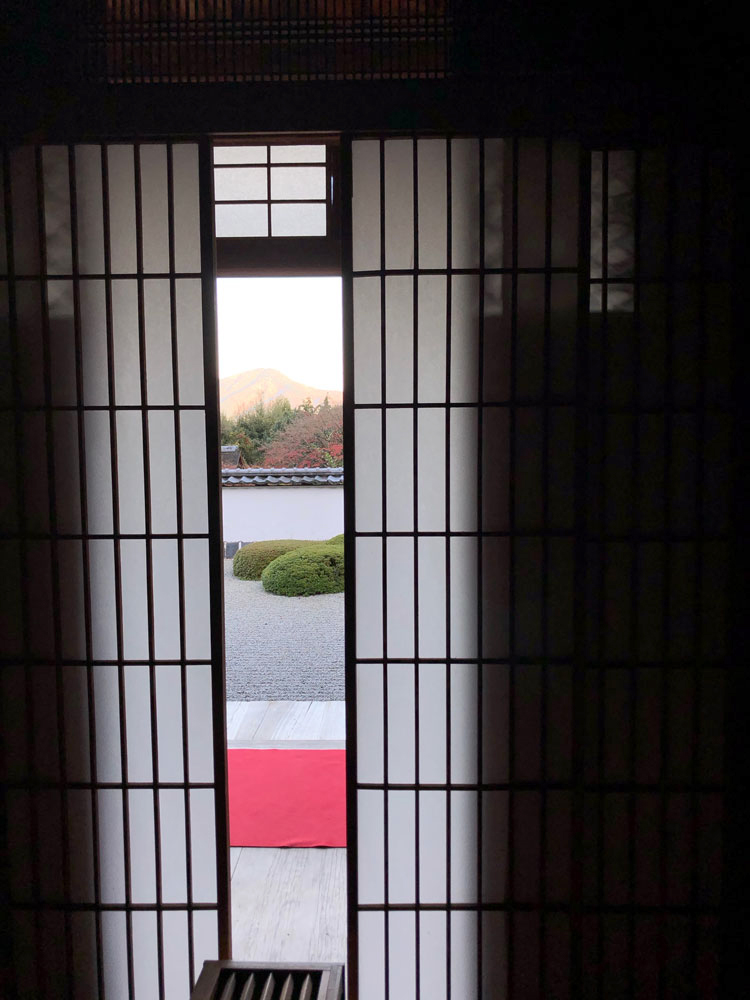
This image conveys the meaning of Ma—the Japanese and Chinese emphasis on the space in between things—in a simple way.
We were in a small, out-of-the-way temple in Kyoto called Shoden-ji. Photographing the inside of the temple is forbidden, but we were allowed to photograph the view of the outside garden. Our guide told us that David Bowie burst into tears at its beauty.
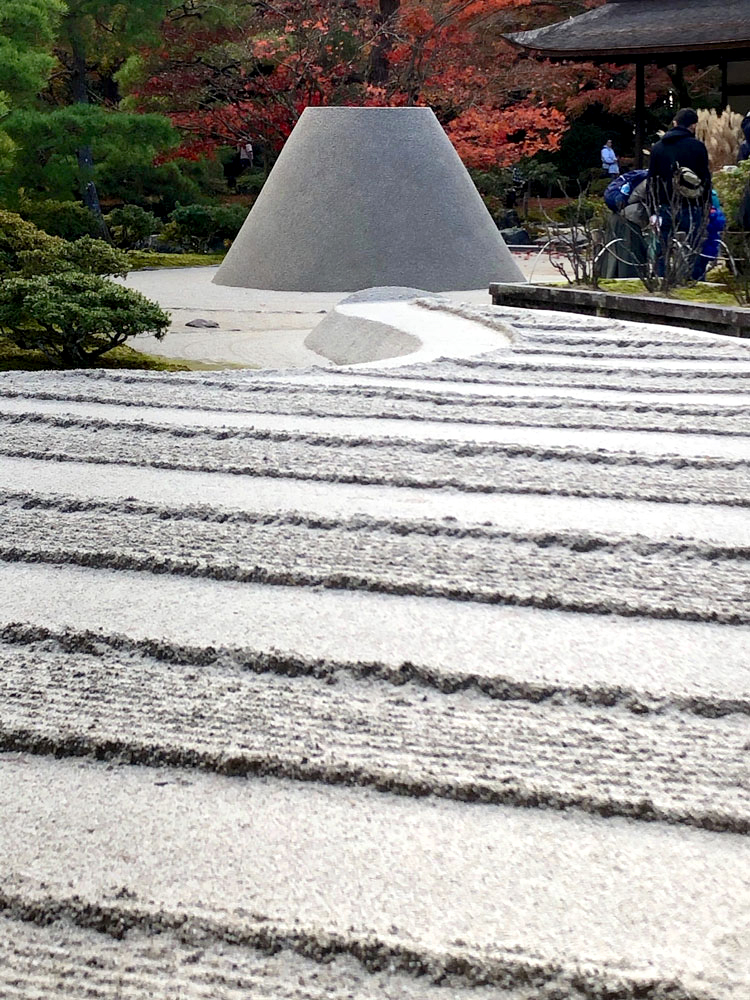
This is one of many Zen dry gardens in Kyoto. We tried to figure out how the monks raked out the fine gravel (used because it’s less vulnerable to wind than sand), how this perfect cone was shaped, and in what order it was all done, but it was impossible to tell.
Gravel often represents water, and stones represent mountains or islands. A progression of “falling” rocks or bushes can represent waterfalls.
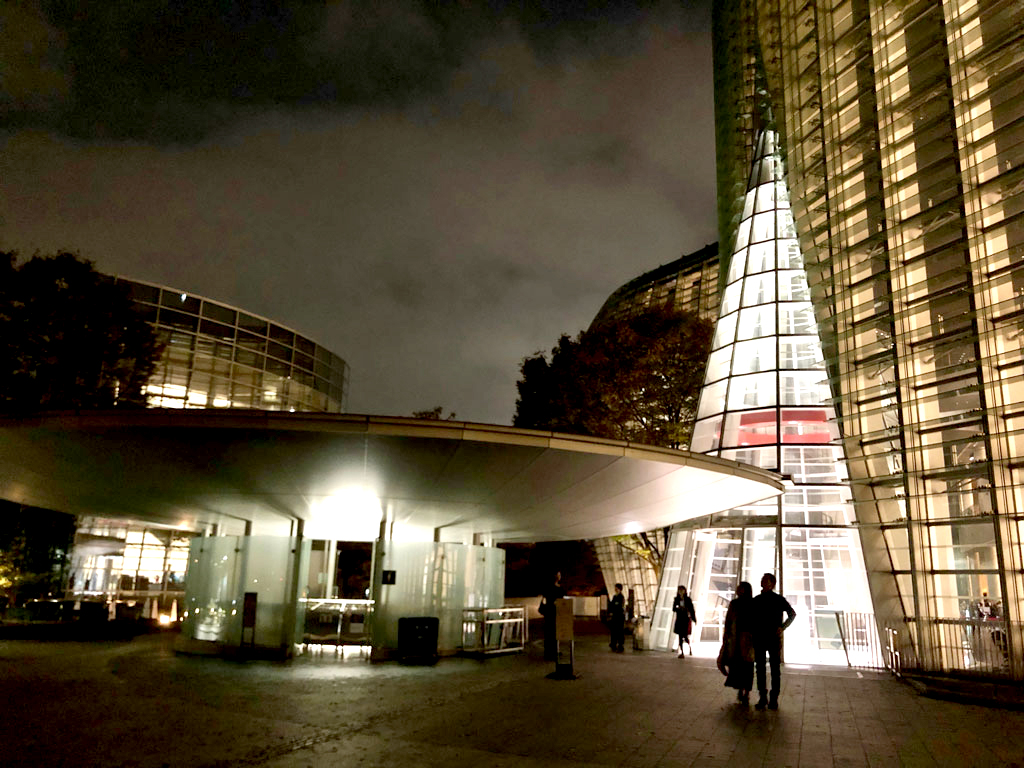
The exterior of Tadao Ando’s National Art Center in Tokyo is like a spaceship. The interior architecture includes a common space that surrounds the art galleries and is accessible to the public for free with cafes, museum shops, and wonderful places to sit.
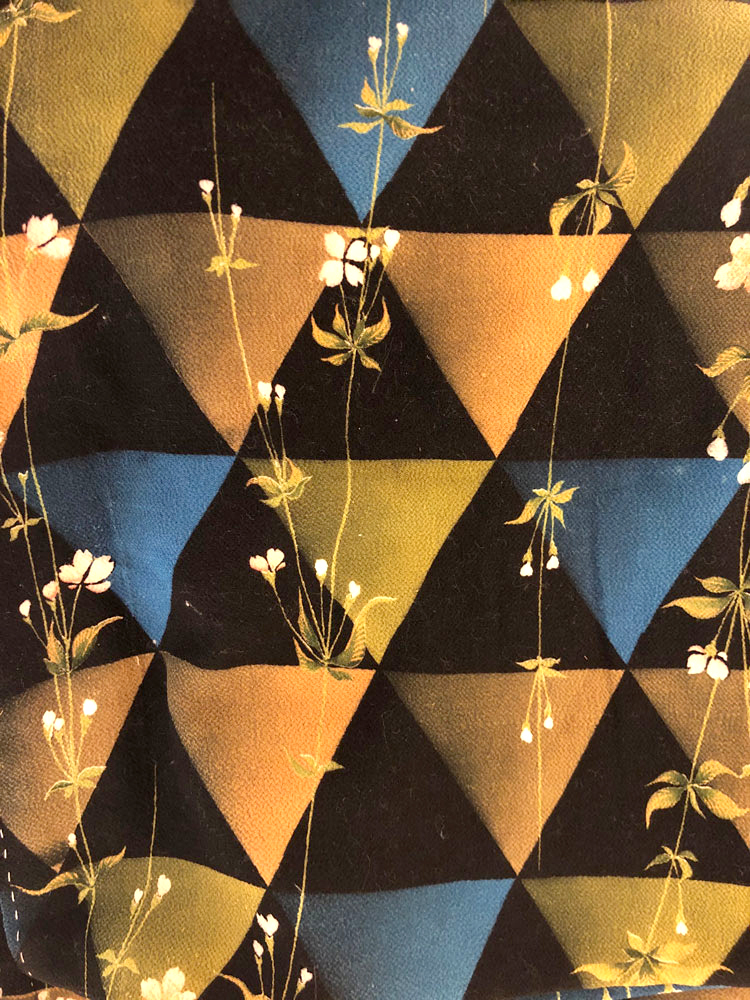
This is a beautiful fabric from a late 19th– or early 20th–century silk kimono. The gradation in the colored triangles creates a spatial atmosphere and warm light. There’s a clever combination of geometry and natural form.
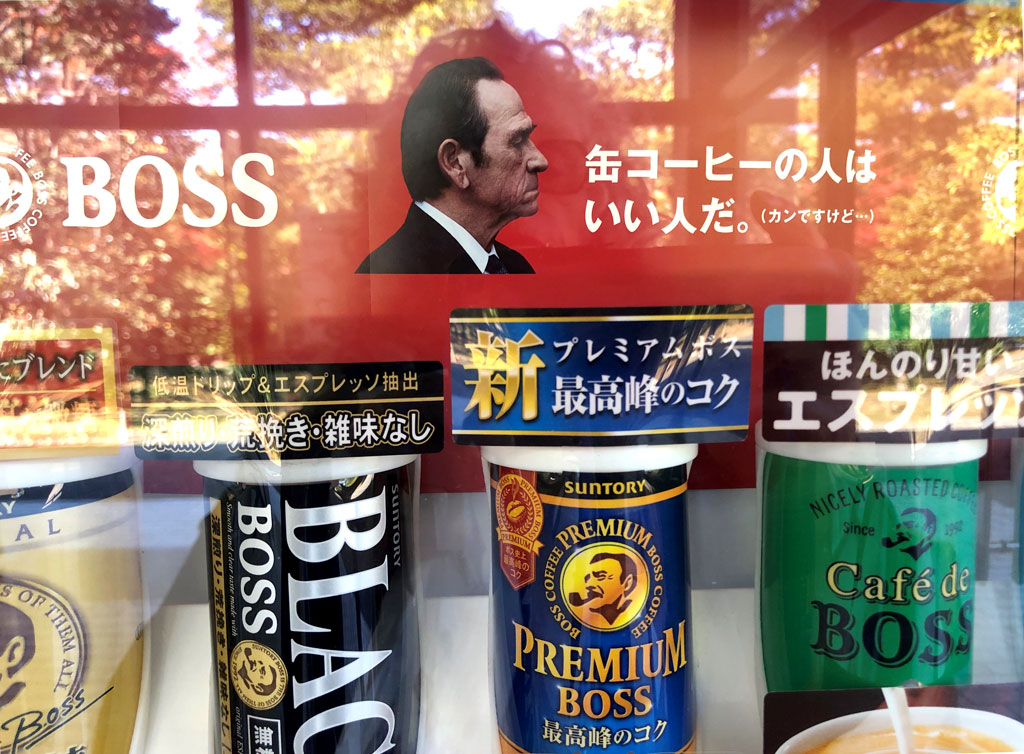
Tommy Lee Jones is a favorite figure in Japan. Here, he’s advertising Boss coffee drinks, many of them served hot, in a vending machine. Being on a coastal plain, Tokyo can be cold—so the machines offer a handy opportunity to warm up or caffeine-up.

Japan is a country that loves cartoons—here is a distant and silly relative of a Philip Guston (ANA 1980) potato head.
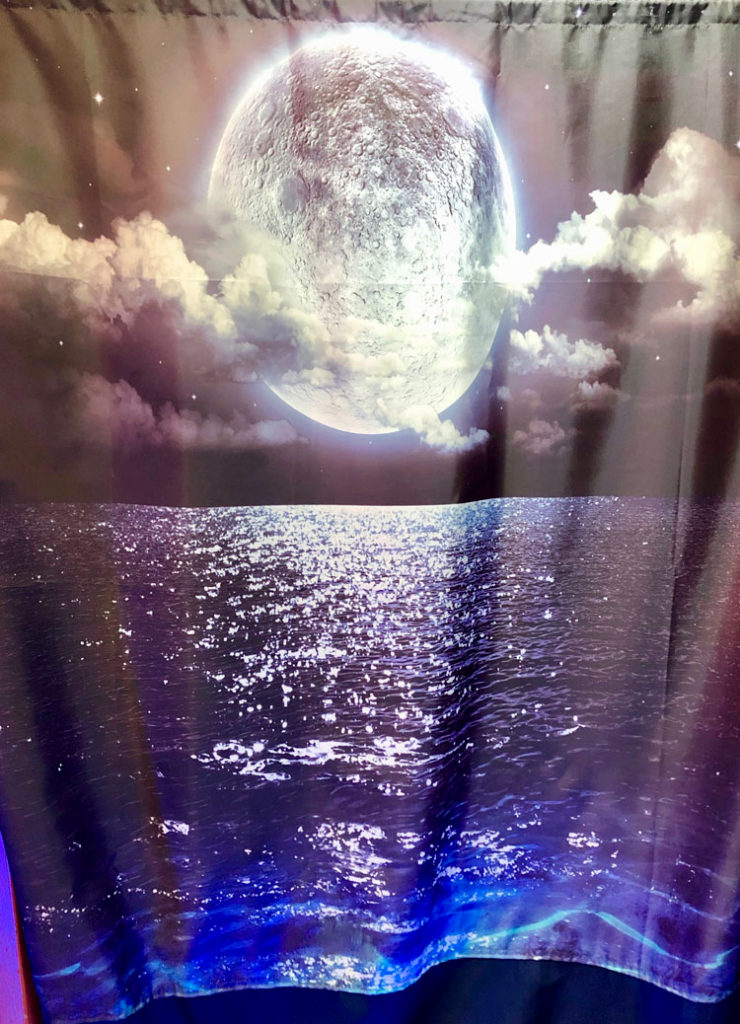
From the red-light district in Kyoto, here is a photographic projection on a silver, transparent curtain at the entrance of a “bubble bath” venue. One can take a bubble bath in order to “get to know” a woman. Paying for sexual favors from a stranger is illegal in Japan.
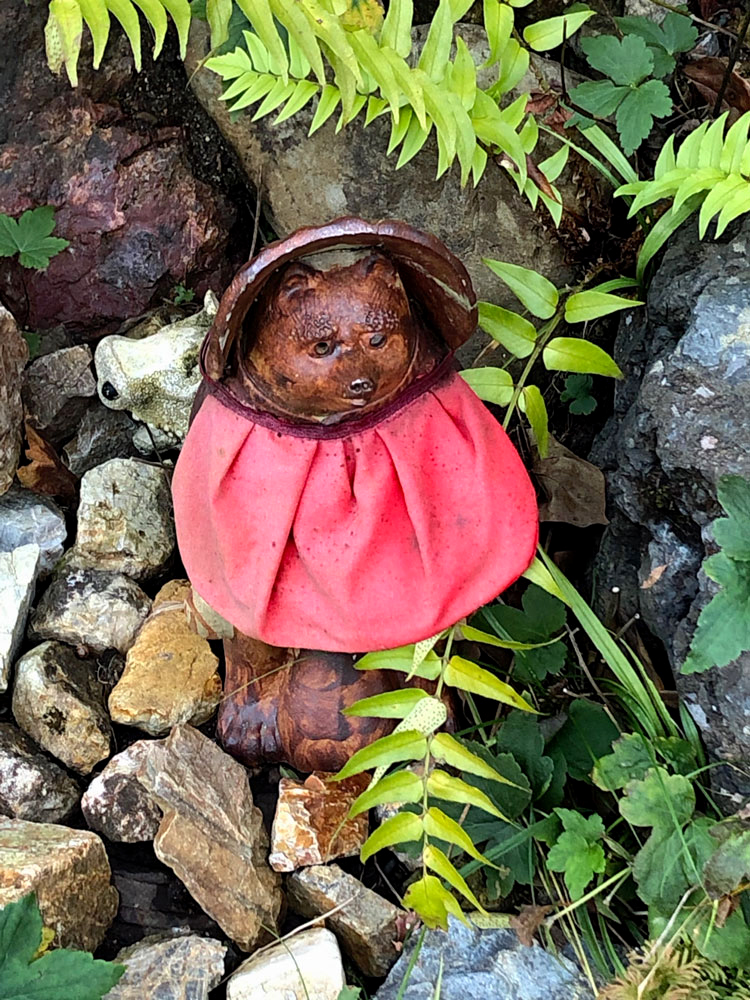
The raccoon dog, or tanuki, is one of the many mythical creatures of Japan. They are foxlike dogs with shapeshifting powers. They started out evil but have become an icon of generosity and prosperity in modern times. You can find these little guys everywhere, especially outside of businesses, bars, and restaurants.
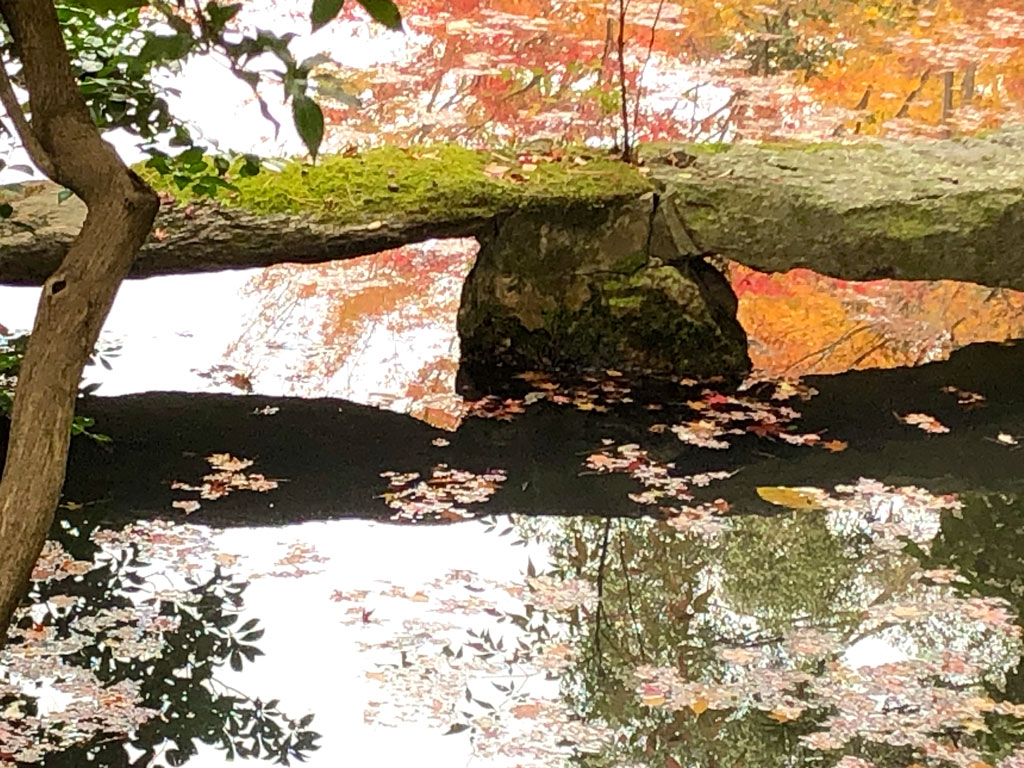
Ma, or the space in between things, is much of what the gardens in Japan are about. First, you are disoriented by, say, a cobblestone path that is intentionally difficult to walk on, so you need to keep your eyes on your feet. Then, when you look up, you see an expansive vista. You are thrown into seeing an infinite, complex, and abstract space made of rock, water, reflection, and shadow.
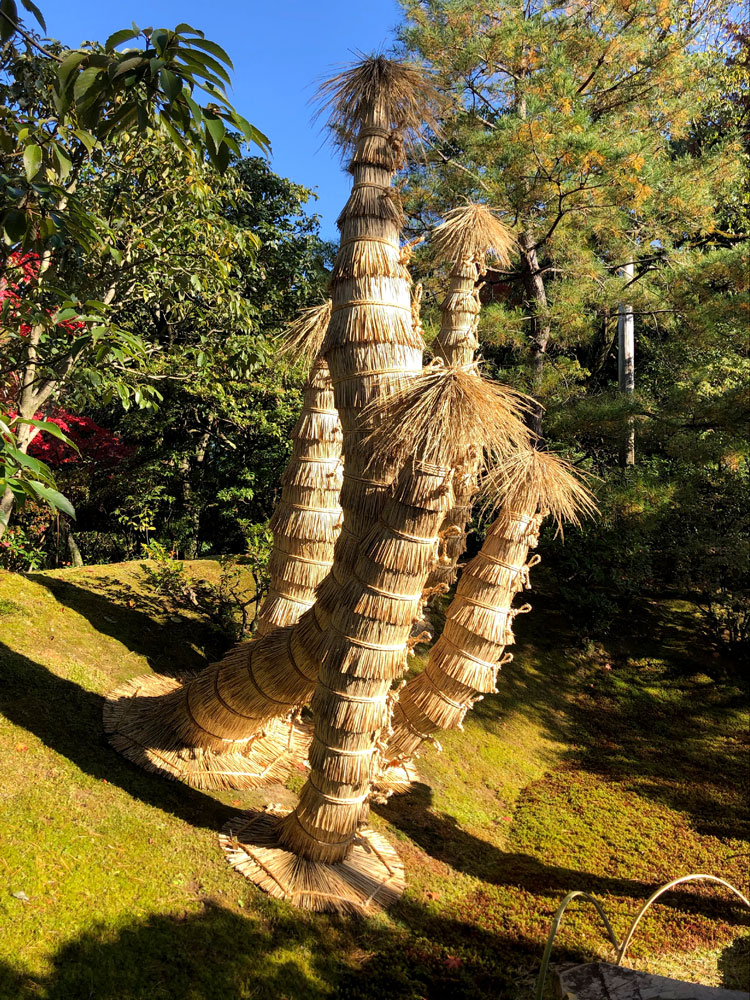
Instead of using insecticides, many Japanese gardeners wrap their trees with straw and string to give insects a warm place to live during the winter, so they don’t need to bore into the bark of the trees. Dr. Seuss would approve.
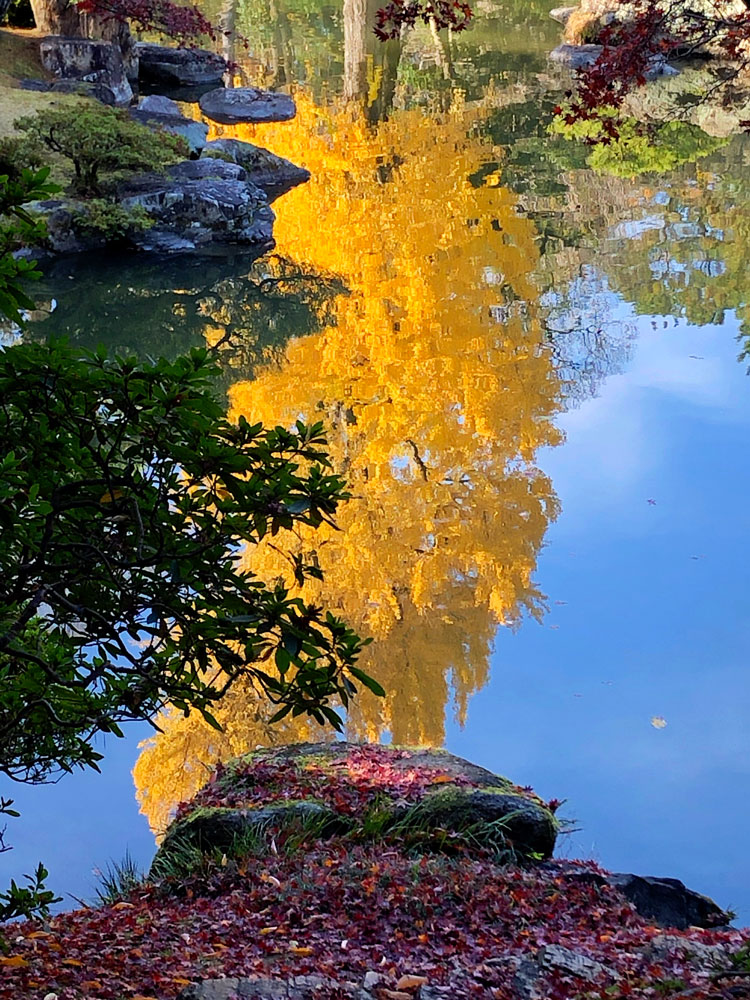
We were in Japan just after the height of the fall colors (one of the peak times to be there, alongside the viewing of cherry blossoms in the spring). The rocks in the upper left seemed to be floating in air.
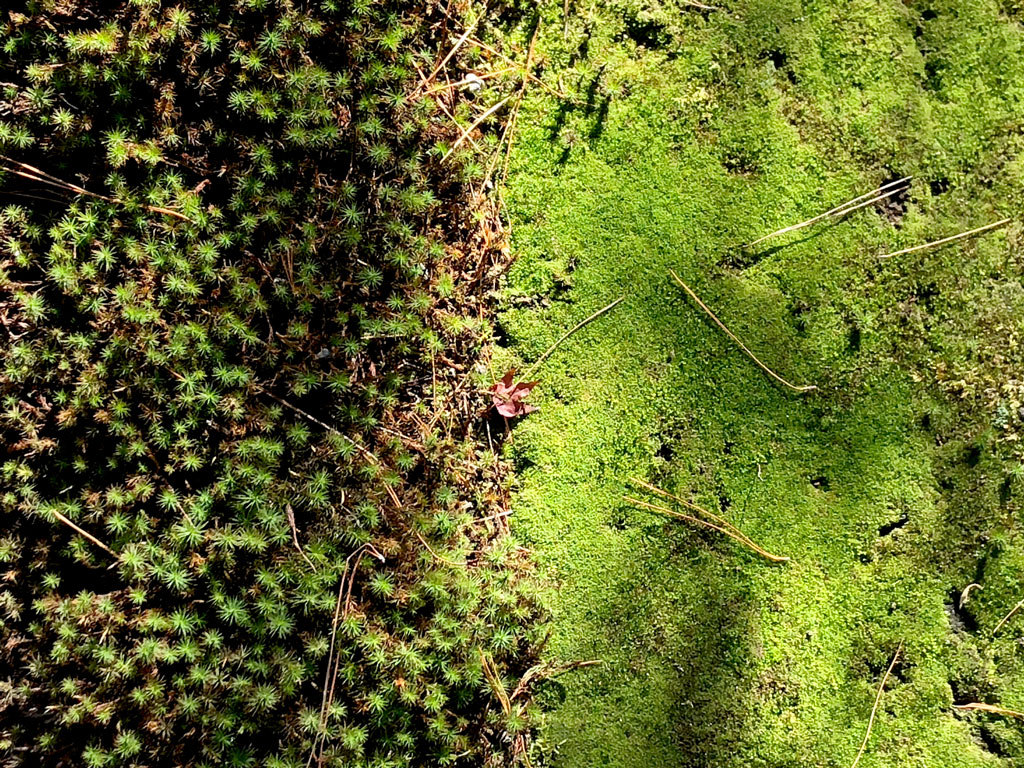
This photo is from the famous Saihoji Temple, a Rinzai Zen Buddhist moss garden in Kyoto. Before entering the garden, each visitor must copy a page of Buddhist scripture with a brush pen. Workers tend the moss, sweeping it with special long, soft, and tapered brooms. They wear cloth shoes to protect the moss.
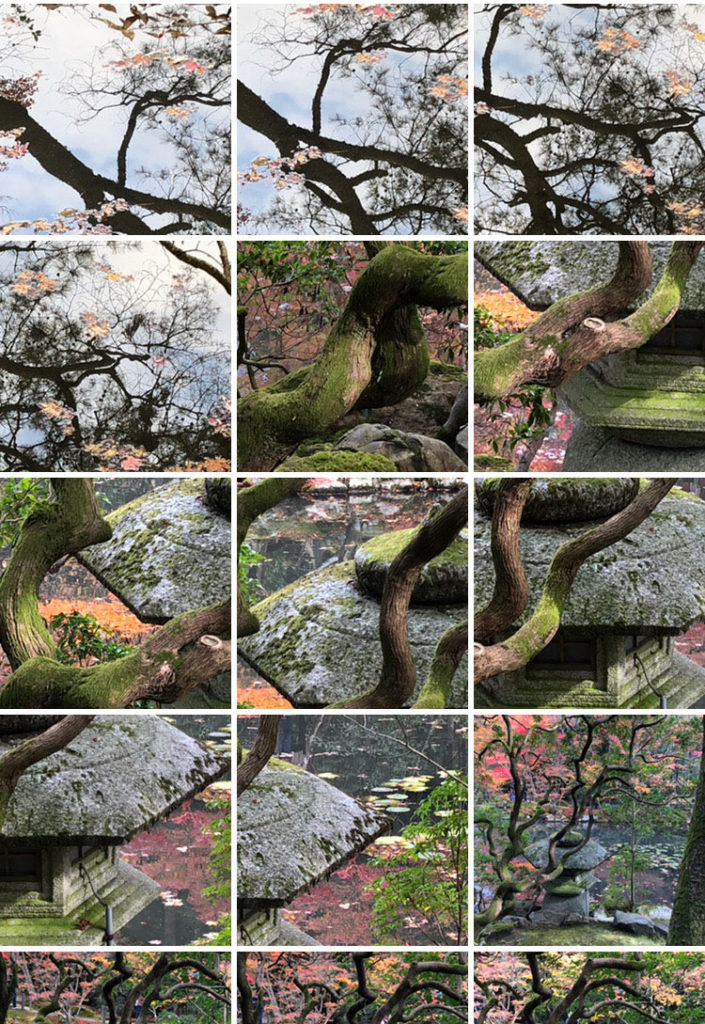
Another approach to Ma.
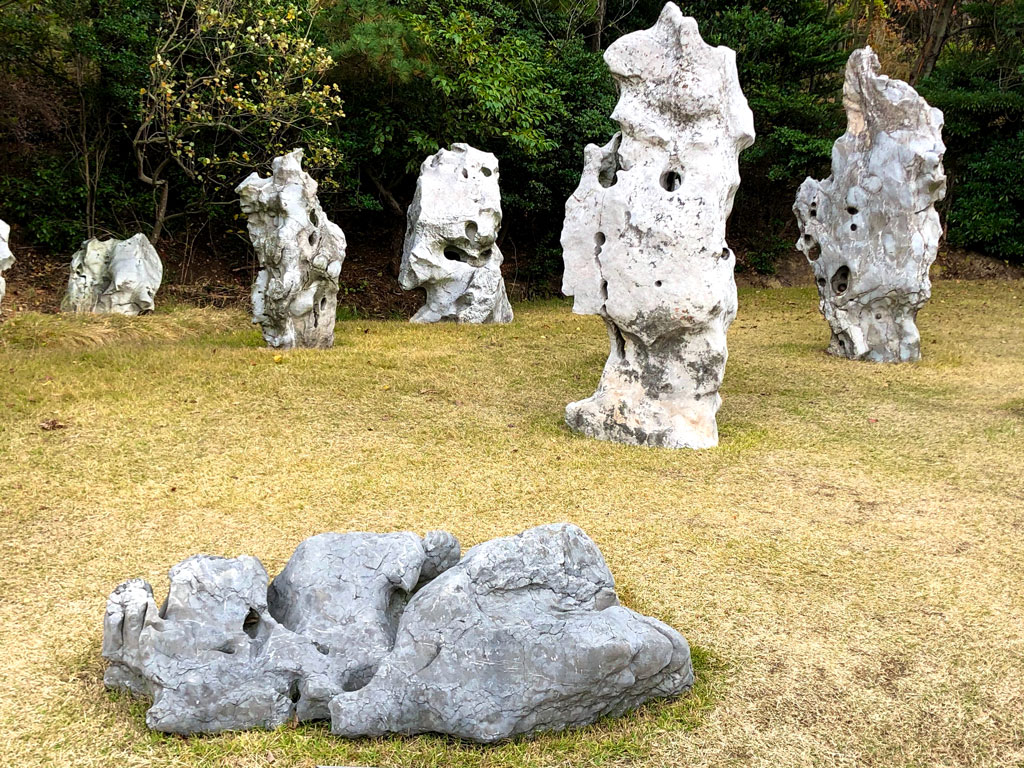
The art island of Naoshima is in the Seto Inland Sea off the coast of Japan. Much of it is underground, utilizing gauges and scars in the landscape left by salt mining and copper smelting.
Here are the scholars’ rocks outside the Lee Ufan Museum, designed by Tadao Ando. They seemed like a particularly playful group.
Across the island you can see works by contemporary and modern artists and architects, including David Hockney, Yves Klein, Yayoi Kusama, Ryue Nishizawa (NA 2017), Niki de Saint Phalle, James Turrell (NA 2011), and Cy Twombly (NA 2006). Also on display were a group of six or seven extraordinary Claude Monet waterlily paintings at the Chichu Art Museum. Unfortunately, photography was not allowed inside the museum.
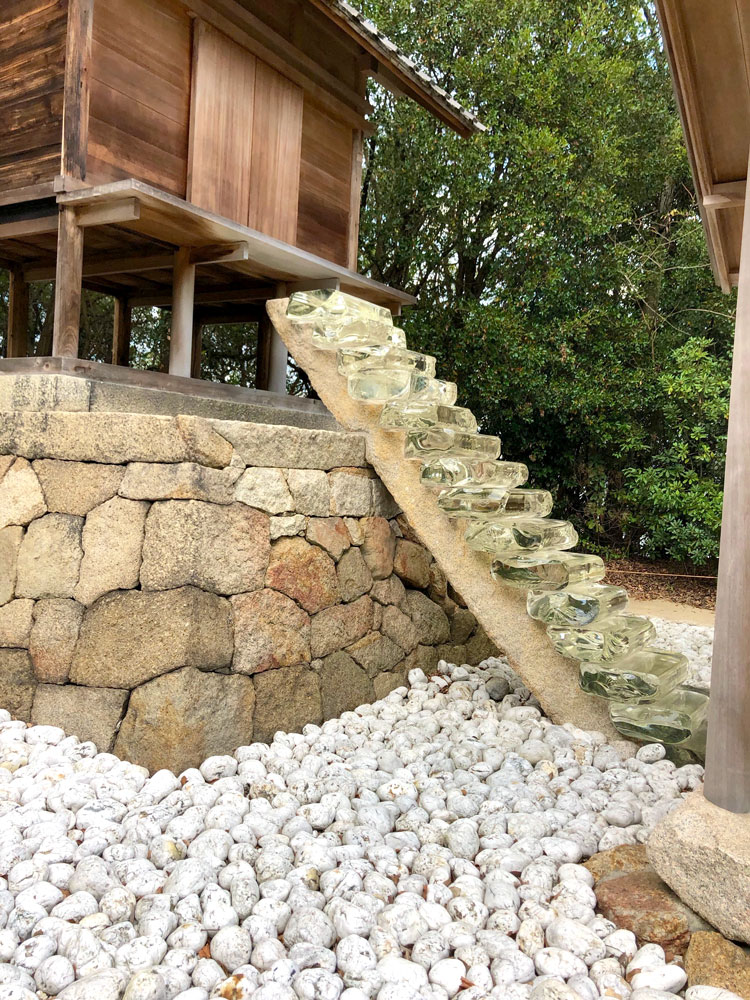
An extraordinary stairway of light, designed by Hiroshi Sugimoto and made from chunks of optical glass, leads to the Go-Oh shrine on a hilltop on Naoshima. Underneath is a long, narrow hallway that you can enter at a right angle to the stairway, if you like, to stand exactly underneath the temple. I found it a bit claustrophobic, like a piece by Bruce Nauman (NA 2012).
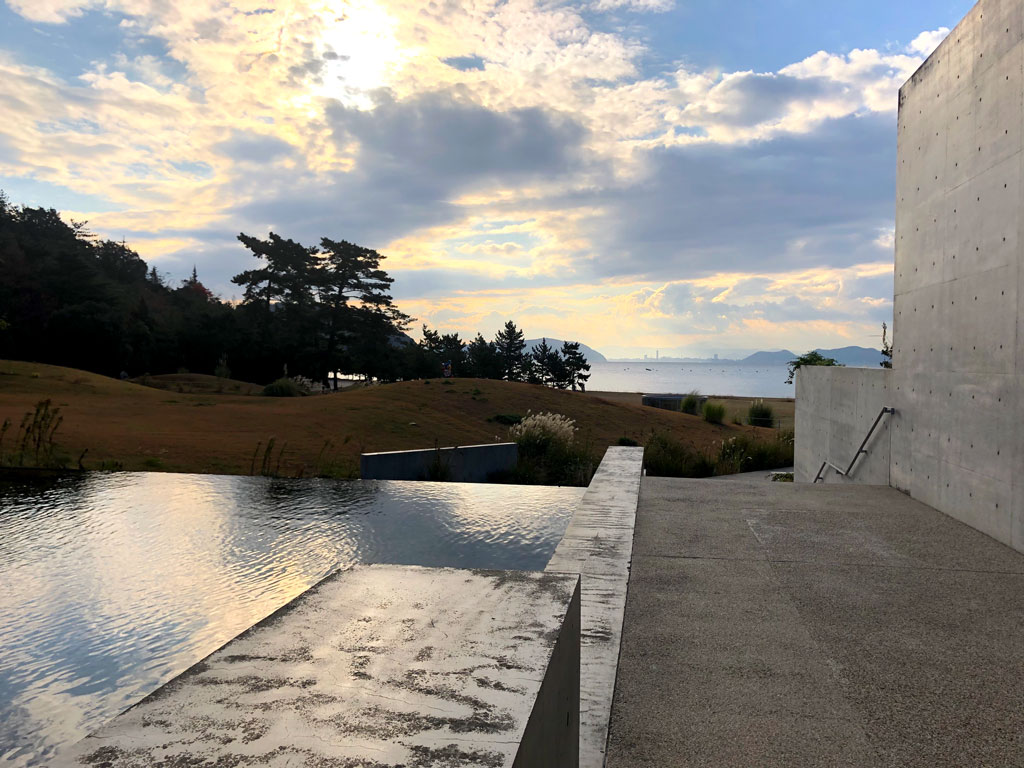
This is a view of the infinity pool outside the hotel on Naoshima. Hotel guests may walk around parts of the museum at night, but, oddly, most of the lights were out. We saw some beautiful Hiroshi Sugimoto photographs in the dark.
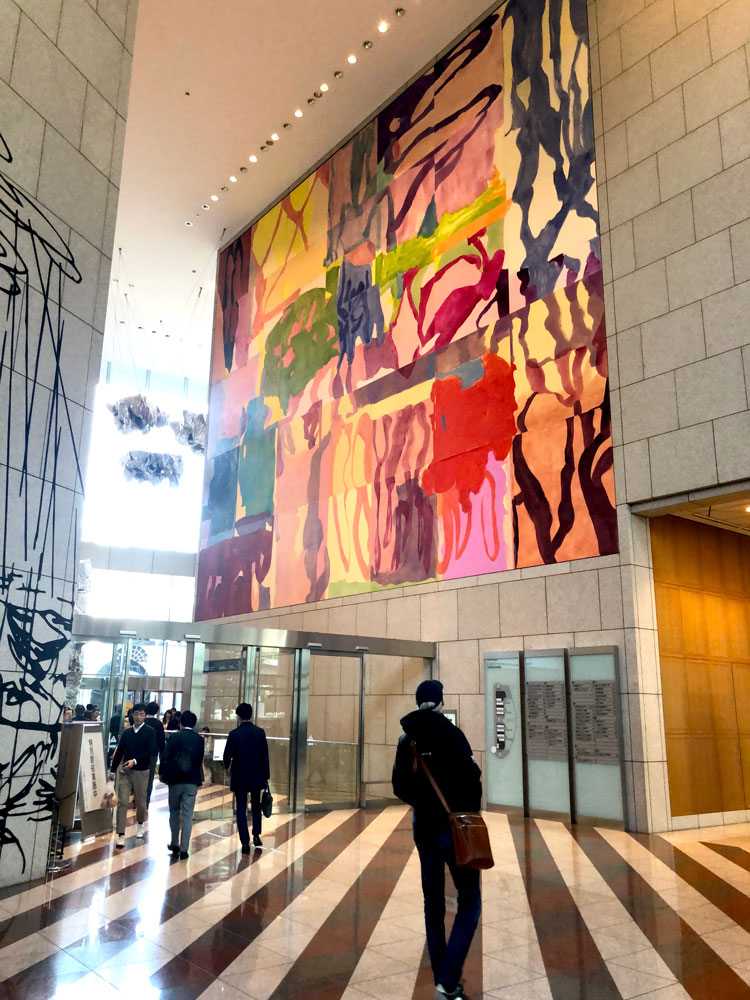
Here is an impressive and extraordinary mural, Woodward Looking East, 2002, by our own National Academician, Melissa Meyer, installed at the Shiodome City Center in Tokyo.
Elena Sisto (NA 2015) lives and works in New York City and Rhinebeck, New York. She received her BA in Art from Brown University and studied at the New York Studio School. She is the recipient of fellowships from the John Simon Guggenheim Memorial Foundation and the National Endowment for the Arts. Sisto has had solo exhibitions at the Greenville County Museum of Art, the Katzen Arts Center at American University, the Maier Museum, and the Museum of Art + Design at Miami Dade College. Her work was included in the 43rd Biennial of Contemporary American Painting at the Corcoran Gallery. Sisto is represented by Bookstein Projects.
- Translated from Saikontan (Vegetable Roots Talks), Yuhodo, Tokyo, 1926, via Kyoto Journal
